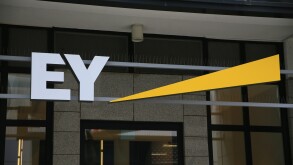In 2019, the Norwegian Ministry of Finance (MoF) proposed to amend the Norwegian R&D Incentive Scheme (SkatteFUNN). Under the scheme, companies taxable to Norway, can apply to get a tax credit for a percentage of their qualifying R&D expenditure.
Despite opposition from several enterprises and tax advisors under the public hearing phase of the proposals, the MoF implemented the much-criticised amendments to the scheme with effect as of January 1 2020.
The main reasons for carrying out the amendments was to improve the scheme by simplifying it and to prevent abuse.
Measures to improve the scheme
Before the new rules were adopted in 2020, small and medium sized companies (SMEs) could claim a tax credit of 20% and large companies could claim a tax credit of 18% of their qualifying R&D expenditure, within certain ceilings. Under the new rules, a company, irrespective of the size, can claim a tax credit of 19% of their qualifying R&D expenditure.
Previously, the tax credit was limited to 18-20% of qualifying R&D costs, limited to NOK 25 million ($2.73 million) for R&D carried out in-house, and NOK 50 million for R&D acquired from an approved R&D institution, such as through universities. Under the new rules, the cap is NOK 25 million for in-house R&D, and R&D acquired from approved R&D institutions. Hence, maximum tax credit was NOK 10 million under the old scheme, which under the new rules have been reduced to NOK 4.75 million.
Qualifying R&D expenditure related to personnel cost will generally be calculated at an hourly rate which is subject to a ceiling. Previously, the hourly cost was limited to NOK 600, and was calculated as 1.2 per thousand on the annual salary. Under the new rules, the ceiling for the hourly rate has been increased to NOK 700.
Under the old scheme, the hourly cost cap only applied to in-house R&D and not subcontractors used. Under the new rules, the hourly cost cap also applies for related party personnel if the participating company acquires R&D services from a related party.
Furthermore, in the event that the applying company acquires R&D services from another company, irrespective of the company being a related party or not, the service provider must be resident in the EEA/EU or in a jurisdiction that Norway has entered into a tax treaty or an information exchange agreement. It is not clear if the geographical requirement relates to tax residency or registration/incorporation.
Measures to prevent misuse of the scheme
In order to prevent abuse of the scheme, the MoF has introduced a requirement that the R&D personnel’s timesheets must be signed by the employee and the R&D project manager on a regular basis, at least every quarter.
Furthermore, in the event that the applying company acquires R&D services from a related party for more than NOK 100,000 (excluding VAT), the related party must prepare project accounts. The MoF has however not introduced any rules regulating the related party’s project account. In the absence of any guidance, it is reasonable to assume that the related party’s project account must fulfil the same requirements as the project account of the applying company. Under this assumption, the related party’s project account must include:
i. Estimated and accrued R&D expenditure;
ii. Be prepared continuously during the year
iii. Document the timesheets for the relevant R&D personnel including the allocation per day, the names of the R&D personnel, the total hours worked including which milestones the hours relate to;
iv. The signed timesheets, at least quarterly, and
v. The nominal annual salary in addition to documentation of the time and size of the most recent salary adjustment.
Consequently, if a company that participates in the R&D scheme, acquires R&D services from a related party, a significant administrative burden is imposed on the related party.
Enterprises ‘in difficulty’ as a result of COVID-19 may qualify for state aid
Companies that are ‘in difficulty’ at the time of the Research Council’s approval of the SkatteFUNN application, cannot receive funding from the scheme, due to state aid regulations. The assessment is based on the most recent financial statement at the time of the Research Council’s approval.
The purpose of the ‘in difficulty’ condition is to prevent state aid that delays or prevents distressed companies from going bankrupt. However, the outbreak of COVID-19 has resulted in several enterprises being ‘in difficulty’ that would have been viable under normal circumstances. In order to prevent arbitrary outcomes due to COVID-19, the requirements have been relaxed to only capture companies that were ‘in difficulty’ as of December 31 2019.
This change implies that companies ‘in difficulty’ as a direct consequence of COVID-19 may nonetheless qualify for state aid, including SkatteFUNN.
Mette Lundal
T: +47 928 15 405
Ragnhild Johannessen
T: +47 412 71 988













